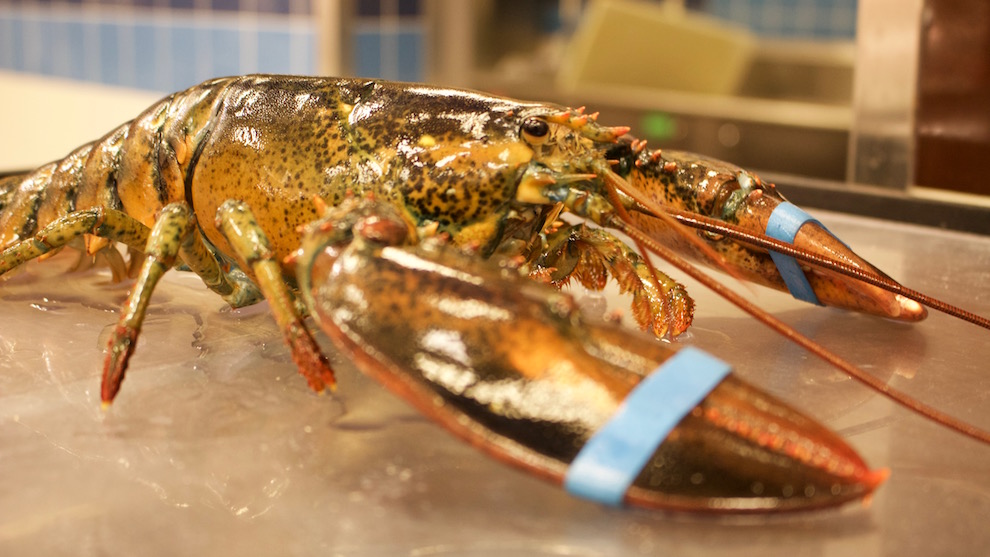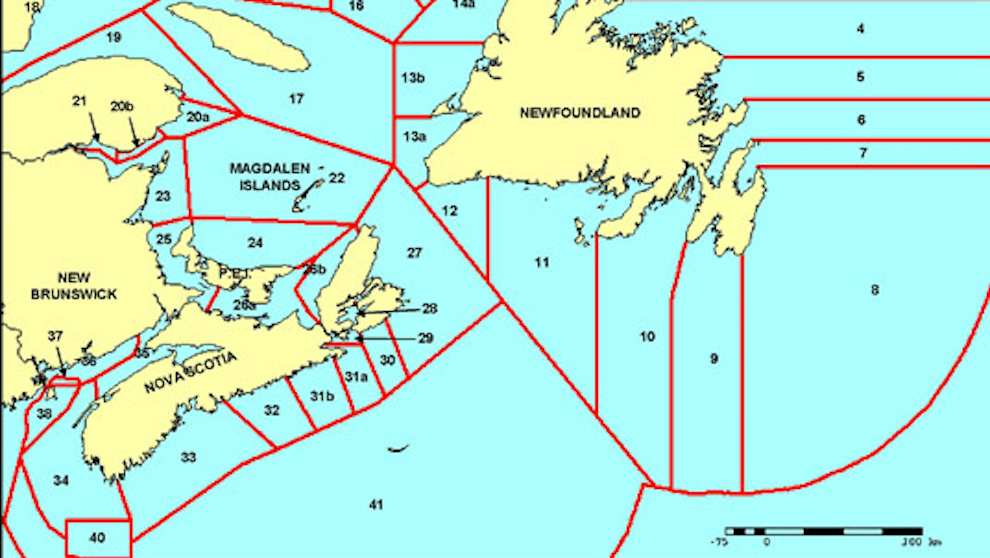Fisheries
Lobster fishing season kicks off in southwest Nova Scotia
Annual ‘Dumping Day’ was delayed Monday due to safety concerns

caption
A live lobster ready for sale.
caption
Lobsters piled in a tank.Lobster fishermen in two areas of Nova Scotia set their traps for the first time this season on Tuesday morning, after a 24-hour delay due to high winds.
The annual kickoff, known as Dumping Day, is when the first lobster traps of the season are set in the ocean. Traditionally, it takes place on the last Monday in November.
Patrick Gray, co-chair of the committee that oversees Lobster Fishing Area 33 (LFA 33), said it was the right decision to consider the safety of fishermen and wait until Tuesday to head out. LFA 33 extends from Cape Sable Island area to Halifax.
“We made the right call based on our information,” said Gray, a 20-year Dumping Day veteran. “Today was a beautiful day; I’d almost bet nothing went wrong.”
Ashton Spinney, member of the LFA 34 committee that also delayed Dumping Day, agrees. LFA 34 extends around the southwestern point of Nova Scotia.
“(Fishermen) were very happy with the conditions,” he said. “There’s a lot of work being done. All the traps are going in the water and they’ll be back in, ready to start hauling (in their catch) at midnight.”
Fisheries and Oceans Canada (DFO) helps lobster fishing areas in Nova Scotia decide if weather conditions are safe for Dumping Day. A decision is usually made a week before the event.

caption
LFAs in Atlantic Canada and Quebec.When boats head out on Dumping Day, they are laden with traps, bait and supplies, making them heavier and more prone to tipping and other accidents. Congested traffic, chaotic ship decks and bad weather also make it easier for people to get caught up in equipment on deck and fall overboard.
Last year, a 53-year-old Cape Breton man died when he fell overboard off the shore of Yarmouth.
“We don’t want that,” said Gray. “We don’t want no drownings, no injuries. We want to be safe.”
The DFO is also working with fisheries officers and the Canadian Coast Guard to ensure a safe start to the season and make sure fishermen are following the law.
“There are extra resources for opening day because of the traffic and the fact that everyone has their boats loaded,” said DFO spokesperson David Jennings.
Lobster fishing in Atlantic Canada is a lucrative industry. The DFO reports that lobsters taken from Canadian traps in 2013 totalled 74,686 tonnes and was valued at $680.5 million. Lobster exports exceeded $2 billion in 2015, while Canada wide seafood exports came in at $6 billion.
Even though the weather delayed Dumping Day, it plays an important role in the lobster hunt. Lobsters thrive in colder water, and in the next week, weather will give lobster fishermen a better idea of what to expect this season.
After Dumping Day, the decision to sail out and set traps or haul in a catch is based on the captain’s judgement of weather conditions. Fair weather means a safer, more successful season for fishermen.
Spinney said there are about 5,000 fishermen on 1,700 boats out at sea, some sailing as far as 100 km away from shore to set traps and bring back a catch.
“Lobster is (Nova Scotia’s) biggest industry,” said Gray. “And we gotta get going.”

